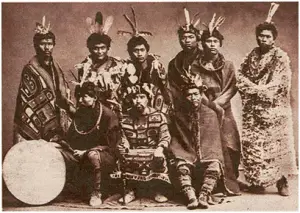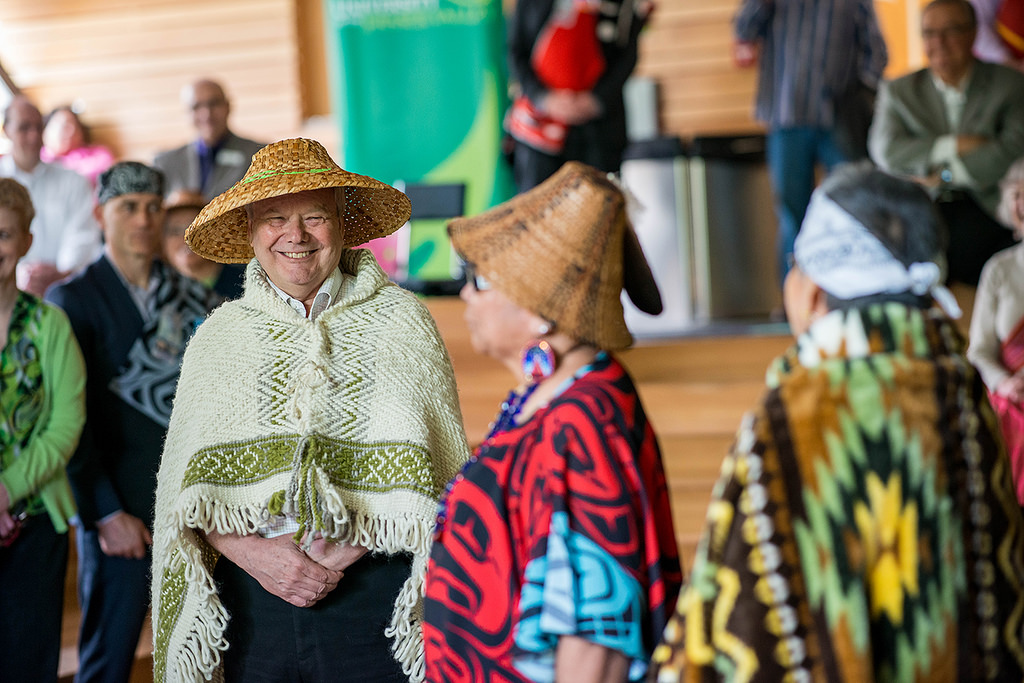
The Enduring Heartbeat of the Salish Sea: A Story of Resilience, Revival, and Reverence
The Pacific Northwest, a land of ancient rainforests, snow-capped peaks, and an intricate web of waterways, has for millennia been the ancestral home of a remarkable people: the Salish. More than just a name on a map or a linguistic grouping, the Salish represent a diverse tapestry of Indigenous nations, each with its unique customs, languages, and histories, yet bound by a shared heritage rooted in the profound connection to land, water, and community. From the coastal shores of British Columbia and Washington State to the interior plateaus of Idaho and Montana, the story of the Salish is one of deep-seated wisdom, unparalleled resilience in the face of immense adversity, and a vibrant ongoing cultural revival that echoes across generations.
At its heart, the term "Salish" refers to a vast ethno-linguistic family, encompassing over 50 distinct tribes and bands. Linguists categorize them into two main branches: the Coast Salish, who thrived along the Pacific coastline, the Salish Sea (Puget Sound, Strait of Georgia, Juan de Fuca Strait), and river systems; and the Interior Salish, whose territories stretched across the Columbia and Fraser River basins, adapting to a life of forests, grasslands, and mountain ranges. This geographical spread fostered incredible diversity. While Coast Salish peoples were master canoe builders and marine harvesters, their Interior relatives were skilled hunters, gatherers, and traders, traversing vast distances on foot or horseback. Yet, a common thread of respectful coexistence with nature, intricate social structures, and rich oral traditions tied them together.
Before European contact, Salish societies were highly sophisticated and self-sufficient. Their economies revolved around the seasonal bounty of their lands. For the Coast Salish, salmon was not merely food; it was a sacred gift, a life-sustaining relative that dictated their annual cycles and spiritual beliefs. Cedar, the "tree of life," provided everything from monumental longhouses and intricate canoes to clothing, baskets, and ceremonial objects. Elaborate potlatches, complex ceremonies of feasting, gift-giving, and artistic display, reinforced social hierarchies, celebrated important life events, and distributed wealth. Interior Salish peoples, while also relying on salmon runs, were adept at hunting deer, elk, and buffalo, and gathering an array of roots and berries, moving between seasonal camps to optimize their harvests. Their rich oral histories, passed down through generations, enshrined their laws, spiritual teachings, and the profound interconnectedness of all living things.

The arrival of European explorers, fur traders, and later, settlers, irrevocably altered the Salish world. Beginning in the late 18th and early 19th centuries, contact brought not only trade goods but also devastating diseases like smallpox, which decimated populations, sometimes by as much as 90%. "Our elders spoke of entire villages vanishing," recounts Mary Jones, a Lummi Nation elder, in a historical account. "The sickness took our strongest, our wisest, our healers. It was a trauma that echoed for generations."
As the 19th century progressed, the relentless tide of Manifest Destiny pushed westward. Treaties, often poorly understood by Indigenous signatories and routinely violated by colonial governments, led to the loss of vast ancestral lands, forcing Salish peoples onto increasingly shrinking reservations. The establishment of the U.S.-Canada border further fragmented communities, separating families and disrupting ancient trade routes and cultural exchanges.
Perhaps the most insidious assault on Salish culture came through assimilation policies, particularly the residential and boarding school systems. For over a century, thousands of Salish children were forcibly removed from their families, forbidden to speak their languages, practice their spiritual beliefs, or engage in their cultural traditions. The goal was explicit: "Kill the Indian, save the man." This period inflicted intergenerational trauma, leading to profound losses of language, identity, and family bonds. "My grandmother told me how they washed her mouth with lye for speaking Salish," shares a contemporary Squamish Nation artist, whose work often addresses this painful history. "They tried to erase who we were, but they couldn’t erase our spirit."
Despite these brutal attempts at cultural eradication, the Salish spirit endured. The mid-20th century marked a turning point, as Indigenous peoples across North America began to assert their rights and reclaim their heritage. This era saw the rise of self-determination movements, legal battles for treaty rights, and a passionate commitment to cultural and linguistic revitalization.
Today, Salish communities are at the forefront of a powerful cultural resurgence. Language preservation is a critical focus, with immersion schools, adult language classes, and digital resources working tirelessly to bring Salish languages back from the brink of extinction. The Salish Kootenai College on the Flathead Reservation in Montana, for instance, offers degrees in Salish language and culture, ensuring that the ancient tongues of the Bitterroot Salish and Kootenai peoples continue to thrive. "Our language is the heartbeat of our people, the vessel for our stories and our worldview," says Dr. Lucy Vanderburg, a Salish language instructor. "Every word we reclaim is a victory, a connection to our ancestors, and a gift to our children."
Art, too, plays a pivotal role in this revival. From the intricate carvings of Coast Salish masks and totem poles to the vibrant beadwork and hide paintings of the Interior Salish, traditional art forms are experiencing a renaissance. Contemporary Salish artists are merging ancestral techniques with modern expressions, creating powerful works that speak to history, identity, and the future. Storytelling, a cornerstone of Salish culture, is also flourishing, with elders sharing oral histories and creation myths, and younger generations finding new ways to tell their stories through literature, film, and digital media.
Beyond culture, Salish nations are asserting their sovereignty and engaging in significant economic development. Tribal governments are building robust economies through diverse enterprises, including casinos, tourism, natural resource management, and technology. This economic independence allows tribes to fund essential services, create jobs, and invest in cultural programs, education, and healthcare for their communities. However, these efforts are not without challenges, as many communities still grapple with issues of poverty, inadequate infrastructure, and health disparities rooted in historical injustices.
Environmental stewardship remains a core value, deeply embedded in Salish worldviews. For millennia, Salish peoples managed their lands and waters with sustainable practices, understanding the delicate balance of ecosystems. Today, this traditional ecological knowledge is proving invaluable in addressing contemporary environmental crises. Salish tribes are leading efforts in salmon habitat restoration, fighting against pollution, advocating for climate change solutions, and protecting sacred sites. The Lummi Nation, for example, has been a vocal proponent for the protection of the Salish Sea, actively working to restore marine ecosystems and prevent industrial projects that threaten their ancestral waters and the salmon upon which their culture depends. "We are the caretakers of this land and water, just as our ancestors were," states a leader from the Swinomish Indian Tribal Community, whose comprehensive climate change adaptation plan is a model for other Indigenous nations. "It’s not just about us; it’s about the seven generations to come."

The journey of the Salish people is far from over. It is a dynamic, evolving narrative of reclaiming what was lost, celebrating what endures, and building a powerful future rooted in ancestral wisdom. From the ancient fishing weirs and cedar canoes to modern tribal enterprises and immersion schools, the Salish heartbeat continues to resonate through the Pacific Northwest. Their story is a powerful reminder that true strength lies not in conquest, but in resilience, not in forgetting, but in remembering, and not in domination, but in the profound and enduring reverence for all of life. The Salish nations stand as living testaments to the strength of Indigenous identity, a beacon of cultural pride and a vital voice in the ongoing conversation about humanity’s place in the natural world.


